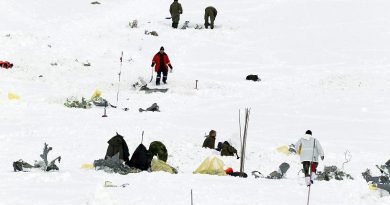Climate change affecting composition of forests in Yukon, Canada, study finds

What happens when one type of tree can no longer survive as well? It’s replaced, study says
Deciduous trees are expanding in several areas of Yukon because of effects linked to climate change, according to new research.
Kirsten Reid, the lead author of a study published in Environmental Reviews, told CBC News that drought, wildfire and permafrost thaw are changing the makeup of forests. She said coniferous trees, which dominate Yukon forests, seem to be fighting a losing battle against deciduous trees, such as aspen.
That’s what appears to be happening in the Yukon’s Kluane region, where aspens are expanding into grasslands, but white spruce aren’t. The study states ideal growing conditions for this type of tree are likely to become “increasingly rare.”
“Through to 2090,” the study states, “projections across Yukon include shifts from boreal forest to grasslands, Arctic tundra to shrublands and forests, and alpine tundra to forest, with the incursion of Northern American ‘prairie-type grasslands.'”
Herschel Island, located off the northernmost point of the territory, is known for its sweeping tundra. Shrubs are becoming bigger and more widespread in the area, said Reid, a PhD candidate at Memorial University.
“It’s really obvious that changes are happening,” she said.
Major patterns point to large changes
Researchers reviewed studies on the issue that date back to the 1980s and identified major patterns that point to large changes in the composition of forests.
Reid said there’s evidence that wildfires can significantly alter dominant tree types in a given area. She added the problem is getting worse as wildfires become more frequent and intense.
“But it also changes the plants that we see on the ground. Similar things are happening after a big permafrost thaw,” she said. “From our perspective, it’s really important to realize that there are things that we can do,” Reid said.
What needs to be done
The study points to a lack of data on the problem in some areas, including in Arctic and subarctic subalpine zones. That’s why it’s calling for regional efforts such as satellite imagery and plot sampling.
Don Reid, a co-author of the study and a conservation zoologist with the Wildlife Conservation Society, told CBC News there’s more that can — and should — be done to give some plant species a boost.
He said that can mean planting more lodgepole pine and black spruce, both of which are under pressure.
“The net benefit, overall, is trying to maintain more diversity across the landscape and fighting back against what looks to be a trend toward homogenization,” he said.
When forests become less diverse, that’s when other problems take shape, he added.
In this case, when deciduous trees overtake conifers, that can impact key food sources for wildlife, including caribou, which rely heavily on lichen.
“We don’t need to just sit back and say, ‘Well this is just a whole bunch of negative things that are going to happen here because climate change is affecting the natural world,'” he said.
“We can try and intervene in some of these things. We can try and direct some of the processes that are happening in nature, so that we can moderate some potential negative effects.”
Related stories from around the North:
Canada: Equipment for Arctic ice survey tested this summer in German highlands, Eye on the Arctic
Finland: Climate change casts doubt on future of Finland’s forest industry, Yle News
Sweden: Sweden to support forest industry following historic summer wildfires, Radio Sweden



